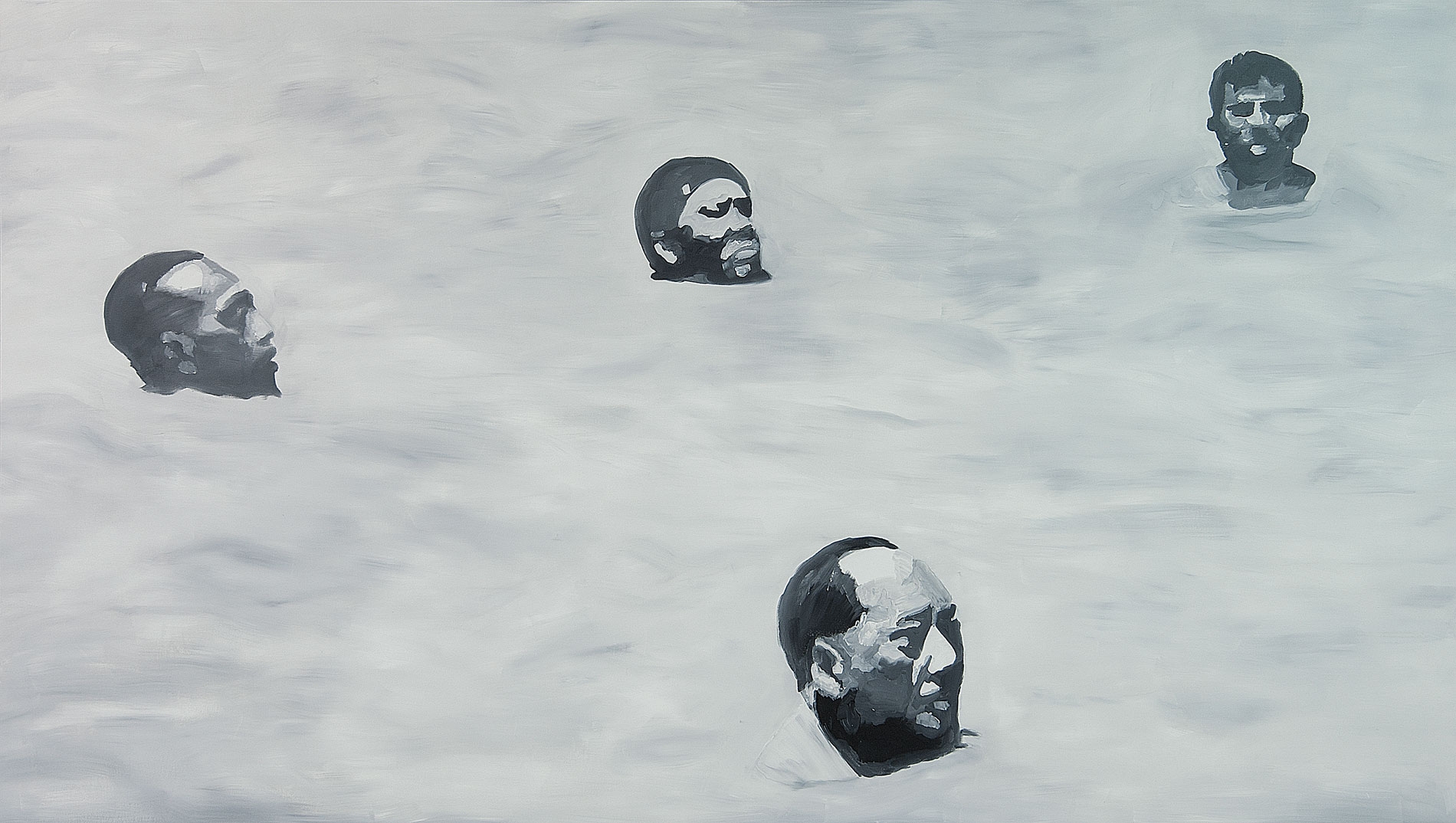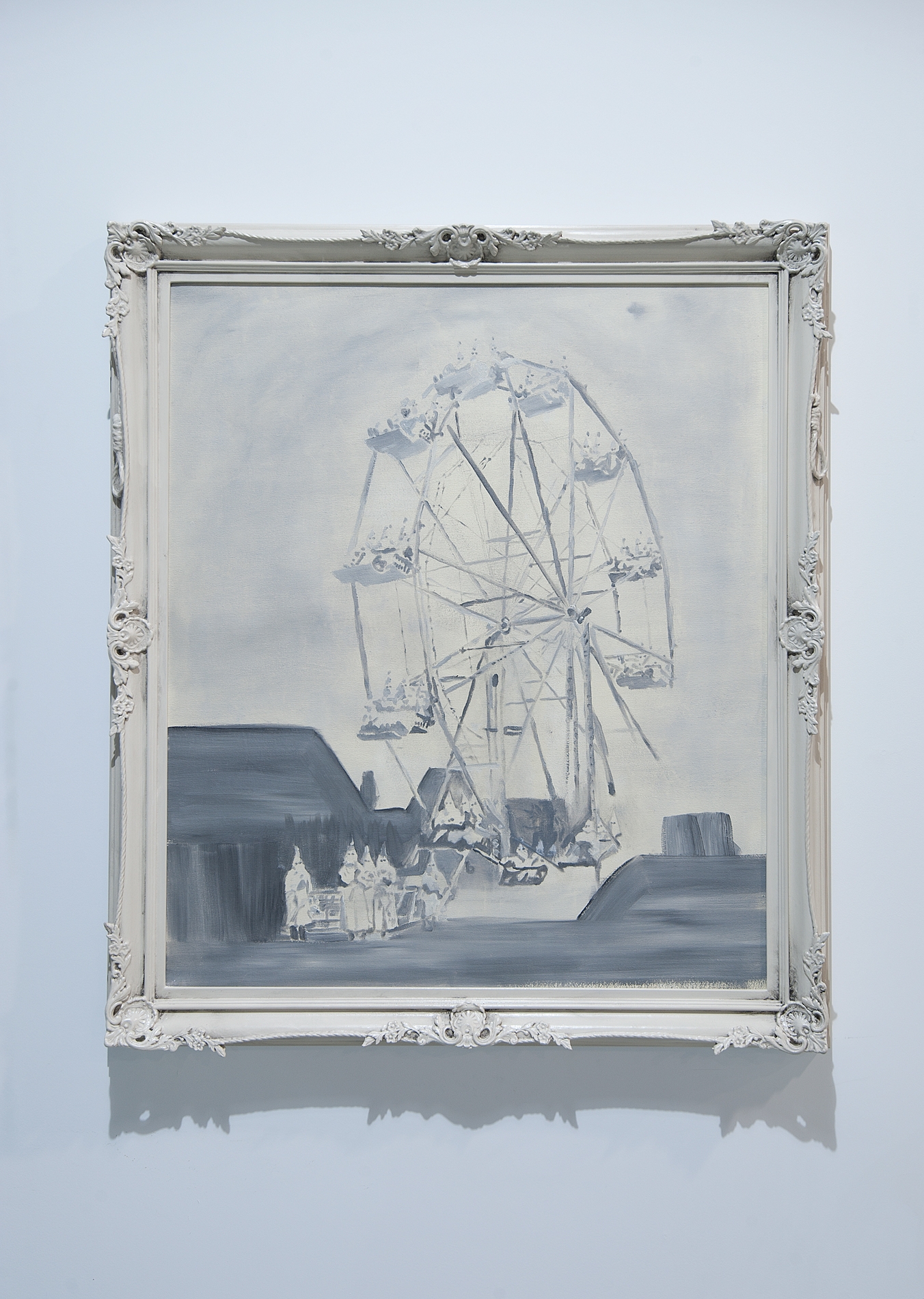
After three years of researching historical and contemporary theories and practices of propaganda and the impact of images in our daily lives, Babak Golkar analyzes the role of social networks, Internet markets and the consequent image culture in which we are not just involved, but deeply immersed and implicated. In the exhibition, the artist plays with the idea of being constantly manipulated through our limited perception, for which image is a powerful tool. Golkar examines a variety of cultural registers—from Bertolt Brecht’s early works in the 1920s to Joseph Goebbels’ use of propaganda, from the Law of Prägnanz to the influence of Steve Bannon’s doctrine and the Tea Party on Trump’s administration—as he focuses on a necessary distrust of the retinal sphere. The Longer You Can Look Back, The Farther You Can Look Forward, with a fresh and playful point of view, explores the complex ideas of contemporary manipulation.
The Longer You Can Look Back, The Farther You can Look Forward, on the one hand, draws on historical characters and registers as reference points to orient the viewer and, on the other hand, disorients the viewer by employing a variety of media and exposure techniques to provide a non-ocular-centric and a more visceral experience.
Babak Golkar.

If you're going through hell, keep going. Churchill, 2019
Ink on vinyl and metal rods.
304 x 213 cm.
Inquire about this work

'Rehearsal' is a recording of a five sessions rehearsal with two contemporary dancers. This piece is an interpretation of a piece of music that Bertolt Brecht wrote for an early play, titled Mann Ist Mann, which he played between 1924-1926. The play humorously explores themes of war, human fungibility, and identity.
We have never been so exposed to propaganda as we are today. The goal of contemporary propagandists have shifted from selling a select subject, or even an object, to the masses to normalizing propaganda to the point of total control of the minds at all costs and at all times.
Babak Golkar.

In the summer of 1966, Chairman Mao, grappling with controversy and criticism for having lost his control and widespread power, took a dip (with his bodyguards) in the Yangtze River to show the world that he was still in robust health as well as relatable to the average person. It was a propaganda coup—the first of its kind—and a tactic that many politicians have repeated since (Putin captured in a photograph exercising Karate in a kimono is one example). The image of Mao swimming was circulated worldwide, courtesy of the BBC, which reported the event from their station in China. The BBC image is the source for Golkar’s painting Drifters (2018). In the exhibition, the image of the painting has been transformed into a scaled–up collaged and tiled wallpaper that covers an entire wall of the gallery.


Sellers is an installation composed of a large-scale painting and a looped sound piece. Both pieces trace the connections between propaganda and marketing, through the works of the American propagandist and public relations mogul Edward Bernays (Sigmund Freud’s nephew) and the Minister of Propaganda of the Third Reich, Joseph Goebbels. The accompanying sound clip is of Thea Rasche, a German pilot who became an instant celebrity in the 1920s after flying from Berlin to New York. Hired by Bernays to advertise short skirts for young girls, Rasche speaks in the sound clip about “the psychology of dress” and how girls should “express” themselves through their choice of clothes. Similarly disorienting, Goebbels’ portrait is painted anamorphically so as to produce a different effect depending on where it is viewed from different physical points in the space.


Amusement Park 1924, 2018
Lead-based oil on canvas and custom-made wooden frame.
101 x 116 x 10 cm.
From a distance, this piece is a faint, almost washed-out, Impressionist-looking painting that depicts a merry-go-round in an amusement park, and the frame innocently resembles an ornate French frame. However, on a closer look the true subject comes to light: the seats of the merry-go-round are filled with hooded figures belonging to the KKK, and the camera also catches some embers lying on the ground. The painting is based on a 1924 photograph taken by Clinton Rolfe of a KKK amusement park in Colorado. As a complement to the painting, the ornate handmade frame mimics the French colonial style, with a subtle modification: a miniature noose is added to either side of the frame.


Descry! How far back can you see?, 2019
Silver infused ceramic.
50 x 20 x 20 cm.
Inquire about this workThe artist’s works developed as part of the exhibition represent a visualization of his distrust of the retinal sphere. It is a journey that dissects the circularity of history, in the reappearance of fascism via the simplification and forgery of facts from the political sphere to the masses.
Matteo Lucchetti.


Painted in a style reminiscent of a theatre background, Mann Ist Mann (2017–2019) is a large-scale lead-based oil painting of a photograph taken in 1899 of Nikolai II, Tsar of Russia, pretending to fly on the back of his friend and cousin Prince Nicholas of Greece. While the two powerful men are captured in the photo being playful, the image is used by Golkar at a subterranean level as a trope, referencing another powerful and politically playful duo: Vladimir Putin and Vladislav Surkov, two major players in the modern propaganda system, with connections to Brecht’s Epic Theatre.